Sea Salt & Paper is an origami marine life themed set hodgepodge game with some push your luck aspects combined to make a 30 minute game for 2-4 players. The game is designed by Bruno Cathala and Théo Rivière, and it’s published by Pandasaurus Games. The game is well-nigh collecting unrepealable cards that match well together and then trying to segregate when to end the game that will moreover score you possibly spare points, or maybe just the ones you’ve placid so far. Pandasaurus Games has published many small box vellum games like this, and they are very popular and easy to get to the table and play. We moreover recently reviewed The Wolves and Orichalcum from Pandasaurus Games, which we invite you to trammels out as well.
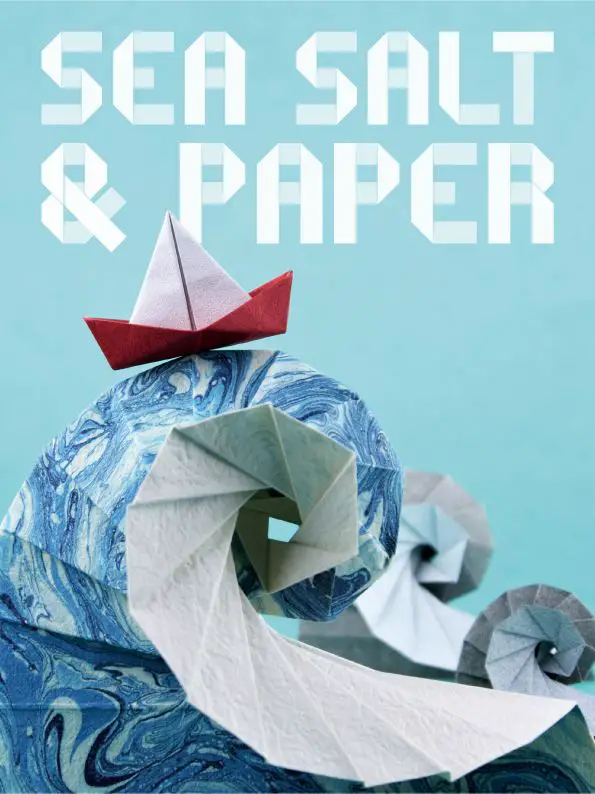
What’s in the Box?
- 58 Cards
- 6 Game aids
- 1 Rulebook
How’s it Play?
The cards are shuffled and form a deck with 2 cards placed squatter up to form two variegated discard piles. Players are trying to score points by collecting a combinations of variegated cards and using the card’s effects. The game ends when a player has at least 7 points and chooses to end the game or can requite all other players one increasingly round, betting they will still win.
Players take turns in a clockwise direction and uncork by subtracting a vellum to their hand. They can do this by either taking the top 2 cards off the top of the deck, choosing one to keep, and discarding the other. Or, they can take one of the cards on top of one of the two discard piles. Either way, players proceeds one vellum each turn.
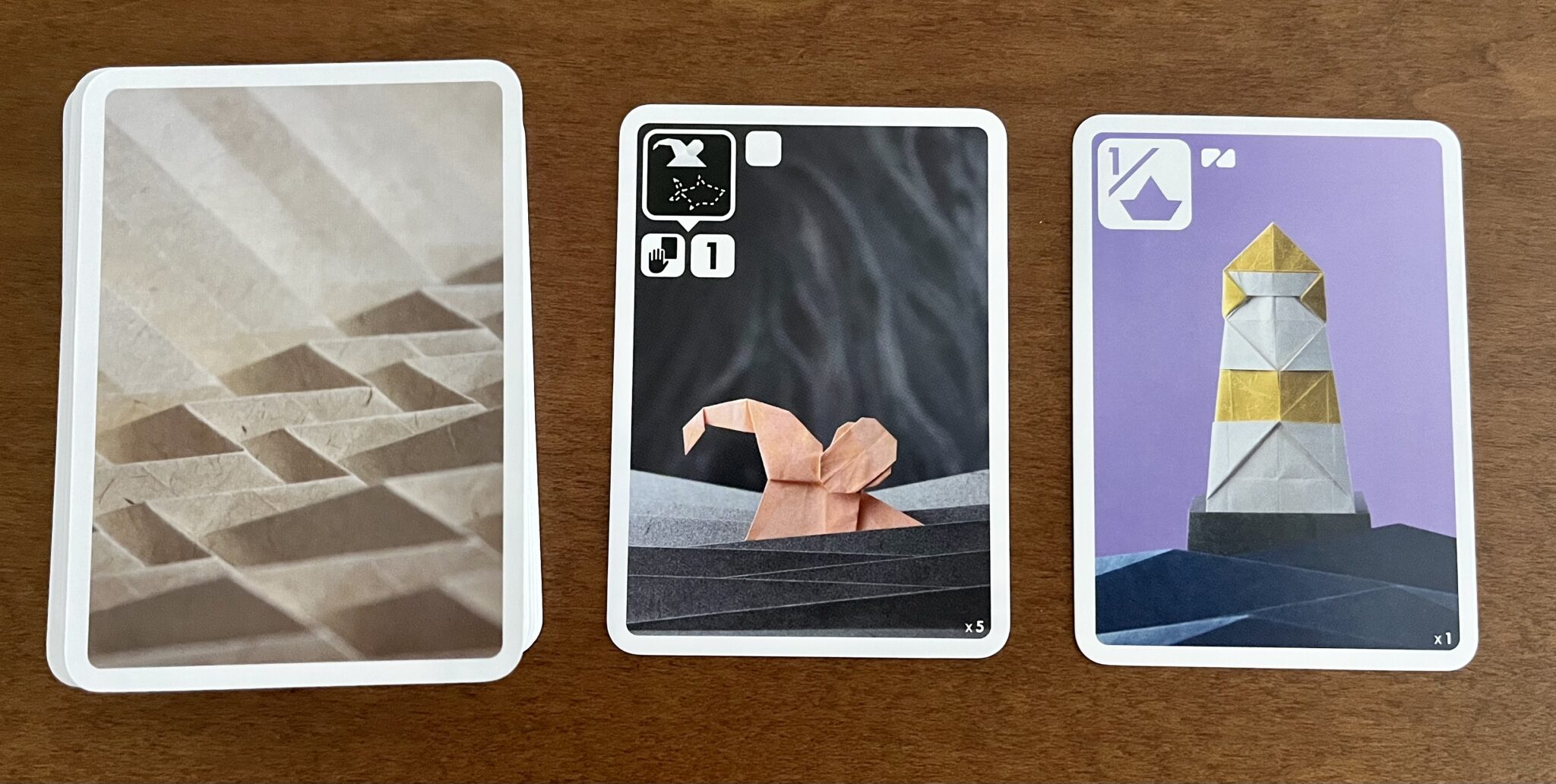
After subtracting a vellum to their hand, any duo cards can be played out in front of the player. These duo cards are cards that show a type of vellum in solid white and then flipside of the same type in dotted lines on the top left of the card. Each pair of duo cards gives you 1 point, but also, each gives you an effect that might add an spare vellum to your hand somehow. This can happen by taking a vellum from the top of the pile, searching through the discard pile and taking one, or taking one from flipside player, depending on the type of duo vellum you play.
Players collect other types of cards during the game that score points. Collector cards requite you increasingly points for having increasingly of the same type of card. Point multiplier cards requite you points for each type of vellum listed on that vellum that you have in your hand. Lastly, mermaid cards requite you points for the biggest group of verisimilitude cards you have in your hand. And if you overly get all 4 mermaid cards, you automatically win the game.
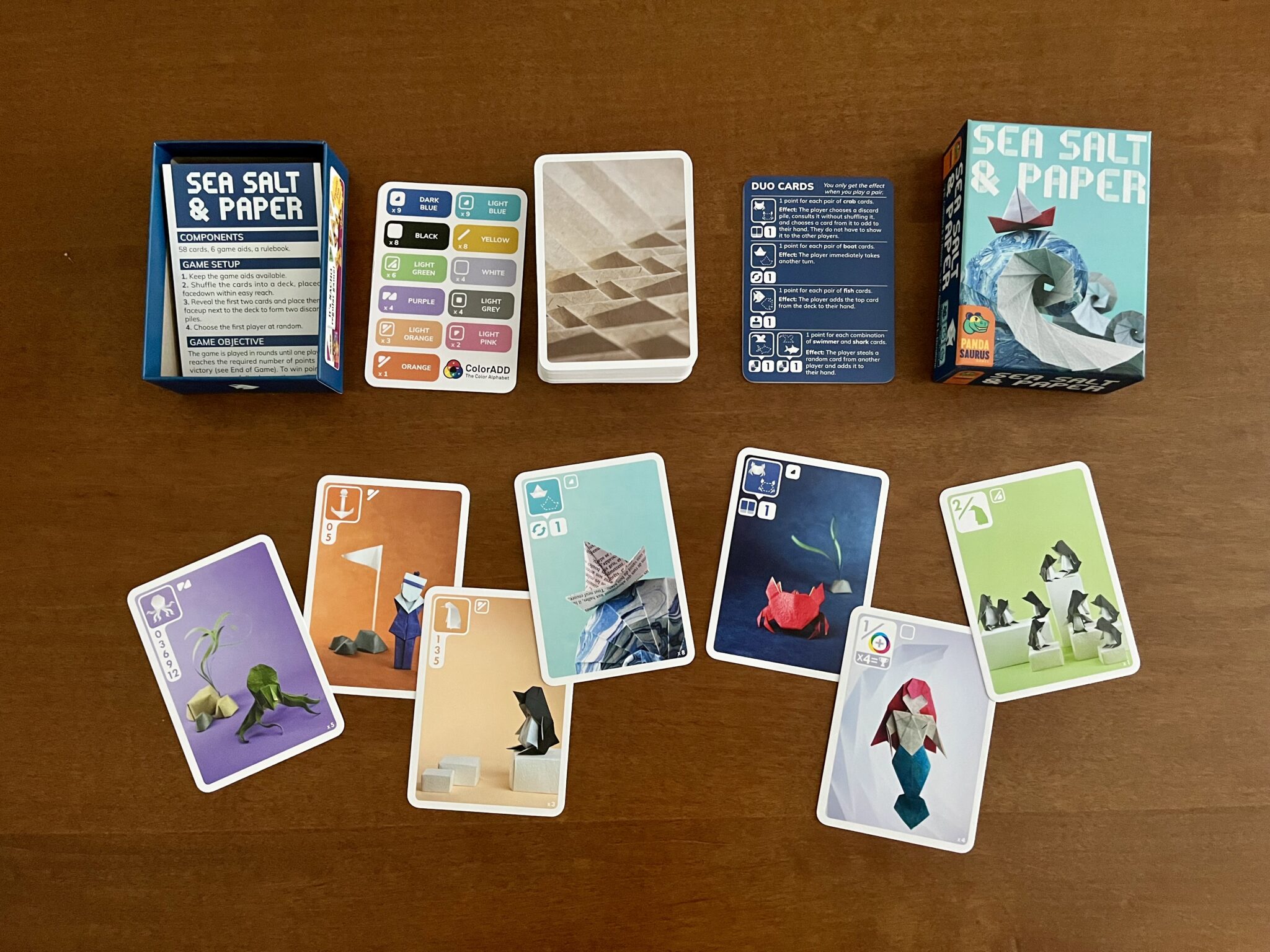
If a player reaches 7 points, they can decide to end of the game saying “stop”, or they can take a bet of having the most points at the end of the round by saying “last chance”, and all other players get one increasingly turn. If a player says “stop”, then players reveal their hands and points are scored for all players. When a player says “last chance”, if they have the most points, they score their cards plus a verisimilitude bonus of gaining 1 point for each verisimilitude vellum they have the most of. All other players then only score their verisimilitude bonus. If that player loses the bet, they only score their verisimilitude bonus, and all other players score their hands as normal.
Everyone plays until they proceeds 40/35/30 points in a 2/3/4 player game. Or if a player overly gets all 4 mermaid cards, they automatically win the game no matter how many players there are.
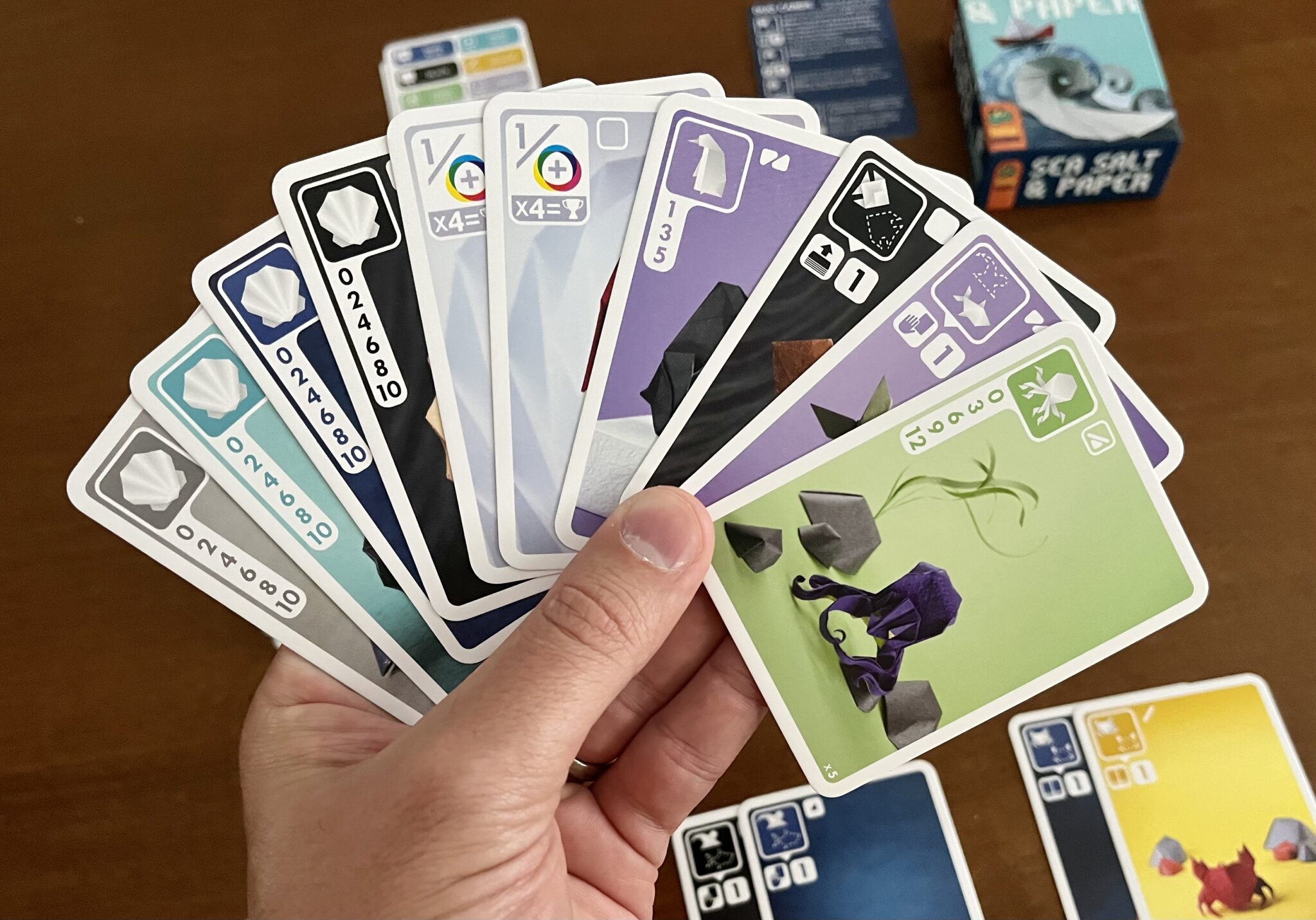
The Verdict
When you learn this game, you might think this is just a normal vellum game, nothing too special. But without digging in a little deeper, you can see the layers of strategy incorporated in the game. Thus, this is a unconfined game both for increasingly lighter strategy game players or players new to playing board/card games. This is not a game everyone will just veritably love, but again, it has a solid diamond that serves up some fun decisions.
You have a good variety of cards to segregate from each turn. At the whence you will most likely be looking at the top of each discard piles, and deciding if you want either one of those cards. If not, you get to squint at 2 increasingly cards and segregate one of those. So really, you have a endangerment at one of four cards unless you see something you like prior. This lets you make decisions well-nigh what cards you might want to collect. It’s limiting, but not too limiting, as you will sooner have wangle to cards you probably will want as the game continues. But you will moreover wiring your decisions off of what you think others might want as well.
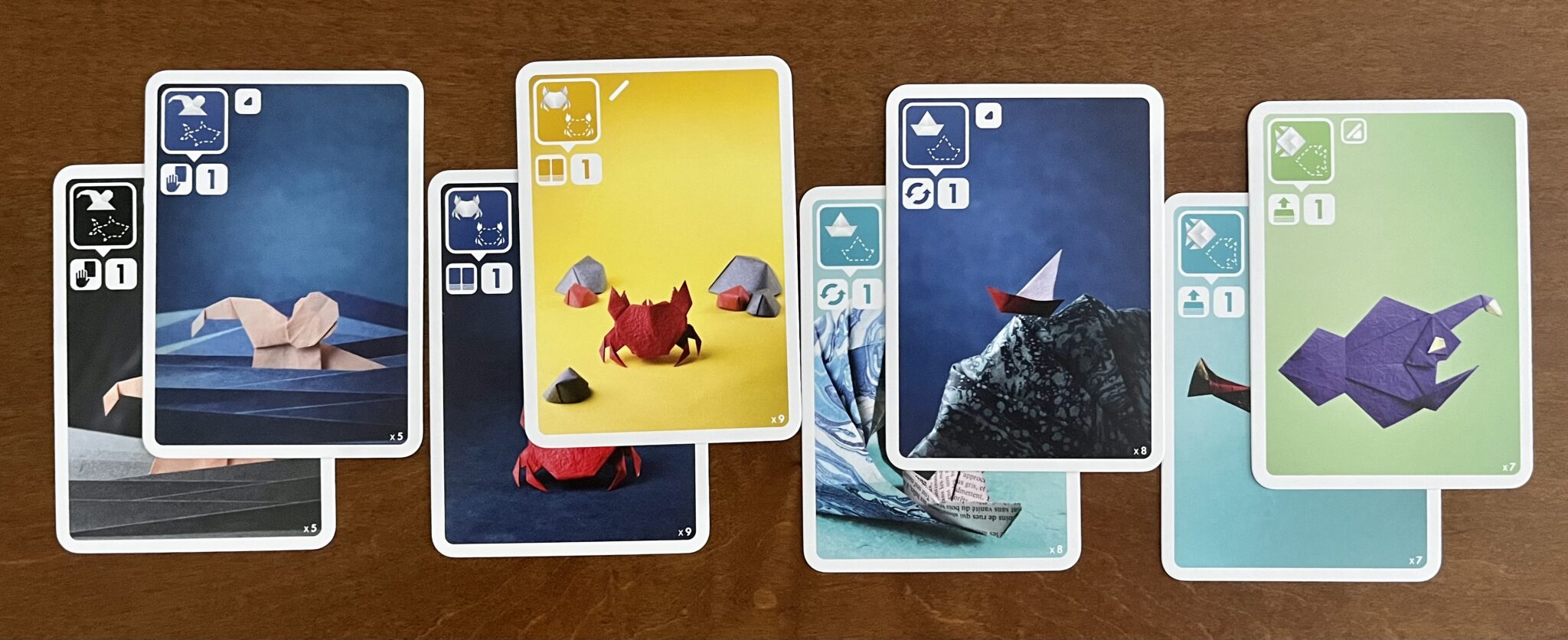
Not all cards are desirable for every player throughout the game. Players might want specific type of cards and others might not, so this may lead to what you consider “good” cards to be discarded, which you can pick up when its your turn with ease. I squint at the possible ways to do the most good that financing the least value of actions. For example, is investing in 2 turns to take 2 cards to make a shark and person pair worth it to steal a vellum from flipside player? Well for me it might not be worth it, but for defense, if I take a very important vellum that would score them a lot of points, then it might be worth it.
It’s a game for looking at what you have and what you might need to make all your cards score some points. You might be stuck with picking one good vellum from a nomination of two, and that can be hard, but you can try to discard the other one and hope no one else wants it, so that you can pick it up on your next turn. So, there can be strategic occurrences in the game. Even so, sometimes it’s just picking a vellum from the choices you don’t really want, knowing those choices might stupefy your future choices as well.
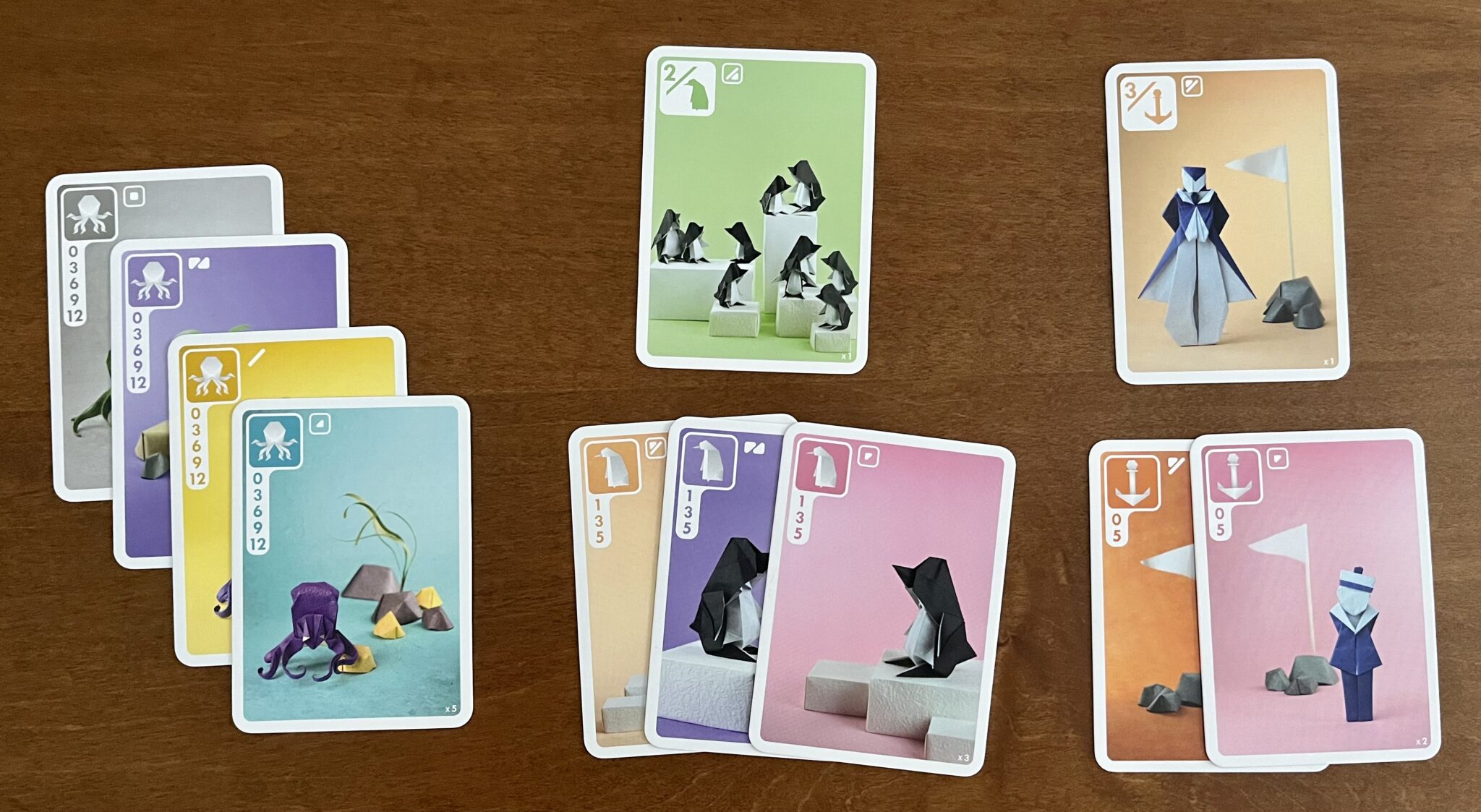
To top it off, ending the game can be an interesting conundrum. Do you bet that you are doing so much largest than everyone else? Or do you just take your points? Other players might have a lot of points, but just want to alimony going, so you never really know where everyone else is at until the reveal. This ways things can get really interesting at the end of a round.
The last thing I wanted to mention is unappetizing out winning the game with 4 mermaids. This is very unlikely to happen, as players will most of the time want a mermaid to score them points that moreover overlaps with how their other cards score points. I have never seen anyone pull this off, but it can be a fun thing to visualize and talk well-nigh as that would make a fun end to the game, expressly if it was a player who was overdue everyone else in points.
Ultimately, this is a vellum game with designers who know what they are doing. They make choices misogynist throughout the game, and as you proceeds cards, the game ramps up. They wastefulness the game out with making cards available, but not super easy. They make sure that when you invest in unrepealable cards, they pay out differently but no one vellum is so over powered as to score way increasingly points than another. As mentioned, this is a game that many will like, but others might pass on.
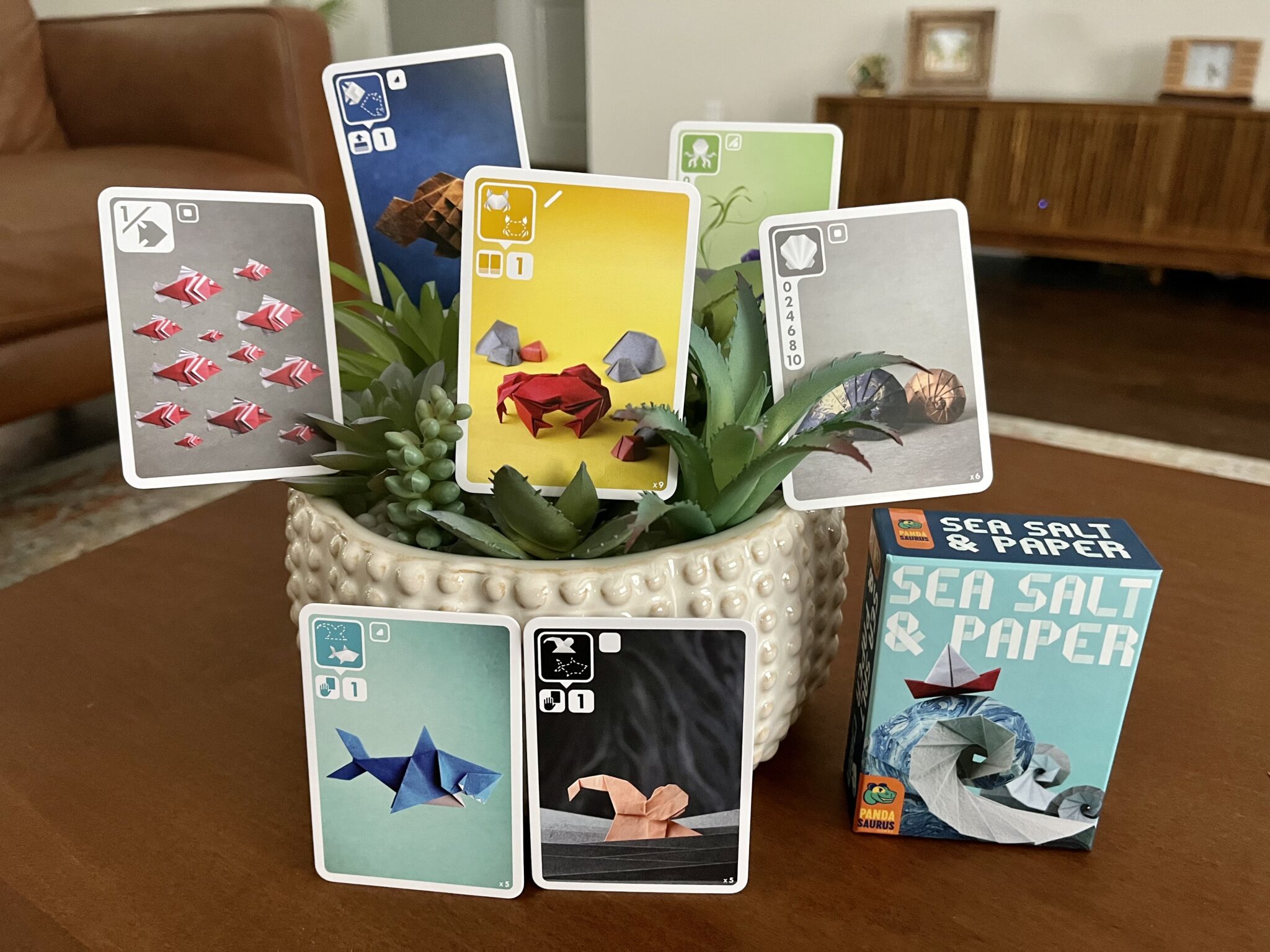
One final thing of note is that the art in Sea Salt & Paper is variegated than many other types of game art. Rather than a realistic or cartoonish style, which you see everywhere, the game uses photography of origami. Your mileage may vary on how compelling you personally find it, but it’s definitely distinct. From the pictures in this review, you can get a sense of whether or not you like it, but for my part, while I enjoyed both the diamond and the game, the art was less of an firsthand yank to playing. Still, it might work for you and push you from just liking to thoroughly enjoying this game. So what are you waiting for? Trammels it out at your local game store and see if it will make it’s way to your gaming table.
You can pre-order Sea, Salt, And Paper NOW at the Pandasaurus shop, with full release set for late September at an MSRP of $14.99
Images via Pandasaurus Games
Have strong thoughts well-nigh this piece you need to share? Or maybe there’s something else on your mind you’re wanting to talk well-nigh with fellow Fandomentals? Head on over to our Community server to join in the conversation!
